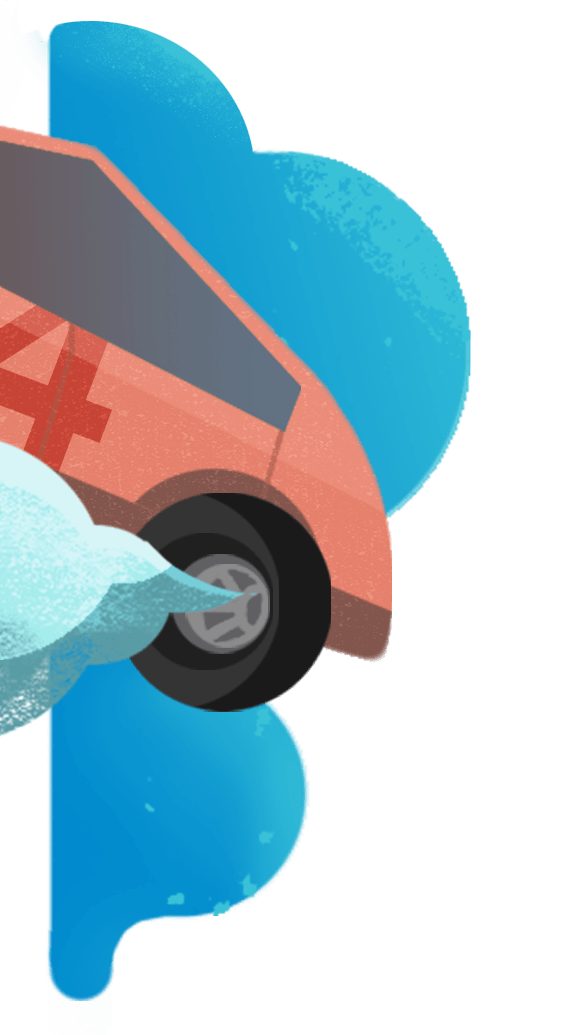As the buzzer sounds on the decade, we’re taking a close look at how rapid change and uncertainty—in culture, politics, technology—are coming together to shape the next decade. The reality is, the games, the rules, the players, and the fields of play are all changing. As a result, the future is up for grabs. If you want to win, your playbook must be about strengthening your adaptability—your organizational capacity for innovation.
As the buzzer sounds on the decade, we’re taking a close look at how rapid change and uncertainty—in culture, politics, technology—are coming together to shape the next decade. The reality is, the games, the rules, the players, and the fields of play are all changing. As a result, the future is up for grabs. If you want to win, your playbook must be about strengthening your adaptability—your organizational capacity for innovation.
Following are 20 trends that are driving market changes—both radical and evolutionary—organized according to four dynamics:
New Types of Players
Get ready for unexpected competition
Evolving Fields of Play
You need dynamic, responsive CX
New Rules to the Game
Stay ahead of evolving expectations
Entirely New Games
Disruption is going to accelerate
The trends in this report describe changes that will impact organizations as well as entire industries and society at large. Some of these trends are longer-term shifts that are just picking up speed; some are nearer-term and reaching the peak of their influence. Because they’re each anchored in core human needs, new social behaviors, or developing cultural attitudes, none of the trends are superficial or fleeting. While some may initially seem like threats to current business and others a clear path to customer’s hearts, we view them all as opportunities.
Download the report (5mb) or get in touch with us.
New Types of Players
We’re talking about offense and defense. Competition is a defining factor of a mature market, but these trends show how digital services accelerate and facilitate new types of competition. Digital transformation reduces the legacy advantages of scale, blurs boundaries between adjacent spaces, and gives greater leverage to customers. Barriers to entry are lower than ever, and large companies must adapt to new competitors by experimenting. The dynamism at work here sends out conflicting signals: We’ll see both platform consolidation and fragmentation in 2020.

Some major private employers are piloting new kinds of healthcare services for their workforce to reduce costs associated with health insurance.
While employer-provided healthcare is not a new idea, last year saw an uptick in new kinds of programs in this space, like telemedicine and wellness subscriptions, from companies (Walmart, Amazon) whose size and influence could accelerate the rate of change in this slow-moving category and broadly impact the healthcare system at large.
IN THE WILDAmazon launched Amazon Care, which offers telemedicine, on-demand house calls, and prescription fulfillment to employees in Seattle.
Walmart is piloting several different healthcare programs for its U.S. employees; in telemedicine, a concierge service, fitness club access, and even running a low-cost clinic.
Starbucks will begin training some employees in mental health first aid and has partnered with Headspace to offer all employees a meditation service subscription.
Competition between platforms is heating up in healthtech and travel booking as companies expand their offerings to capture as much of a user’s journey as possible.
Google, Lyft, Uber, and Airbnb, among others, are making plays to be one-stop-shops for travel and transportation booking, and Apple and Fitbit are competing to be the wearable hub for tracking your health.
IN THE WILDGoogle has a new all-encompassing travel planning tool.
Citi Bikes can now be rented through the Lyft app, and Uber is piloting bus ticket purchases through its app in Denver.
Apple added multiple features—in hearing, menstrual tracking, and long-term trends—to round out its smartwatch platform.
Fitbit added a premium personalized health recommendation service, a smart scale, and even more partnerships to its ecosystem.
We’ve reached a moment where media platforms are becoming indistinguishable, apart from their underlying content catalogs. The next iteration of this space is going to be captured by the companies that find new problems to solve.
The TV and movie streaming space comprised just a couple of services a few years ago; by spring 2020 there will be over a dozen platforms available.
This diversification is costing both providers, who are competing for high-value content, and consumers, who often have to shell out for multiple services to get access to all their preferred shows.
IN THE WILDComcast is launching streaming service Peacock spring 2020.
Disney and other streaming services are spending between $8-$15M per episode to produce leading shows.
Twitch is aiming to go beyond gaming content to other kinds of social streaming.
Netflix, facing competition from Disney+, struck a deal with Nickelodeon to develop exclusive content based on properties like SpongeBob SquarePants.
The online resale market for luxury goods has gotten more crowded, with retailers like Neiman Marcus getting in the mix alongside at least a dozen startup platforms.
The popularity of subscription fashion and secondhand resale services comes during an onslaught of media criticism and consumer guilt over the environmental impacts of fast fashion retailers, some of which are closing stores or filing for bankruptcy.
IN THE WILD

Healthcare startups, initiatives, and offerings aimed at women are on the rise.
Industry is recognizing this historically overlooked population and finding new ways to address their unmet needs, from fertility testing to breast milk delivery.
IN THE WILDRo, the parent company to a women’s menopause relief brand called Rory, raised $90M in its first year.
Modern Fertility created a home testing kit for women's fertility hormones to simplify family planning.
Hologic has grown to $3.3B in revenue commercializing medical technology primarily focused on women’s health and beauty, including creating a cervical dilation tool that increases patient comfort during gynecological procedures.
Private investment in “femtech” companies exceeded $400M in 2018.
Evolving Fields of Play
We’re not at “blink to buy now”—yet—but the ability to detect and interpret customer behavior is growing exponentially, while the distinction between digital and physical channels is collapsing. The “places” people gather and consume services, and the essential value of those services, are being built and rebuilt now. Smart organizations know that winning will require them to play on multiple dimensions.

Established retailers are evolving from optimizing velocity per SKU to focus on serving customers in new ways.
By opening unique spots that focus on services, brands are demonstrating a strategy that’s more about connecting with consumers than moving product.
IN THE WILDNordstrom's Nordstrom Local stores carry no merchandise but offer services like tailoring, personal shopping, and online returns.
REI’s new flagship near the White Mountains highlights an extensive rental selection as well as trip-planning services.
Kohl’s is processing Amazon returns for free, in order to lure customers to stores with the extra service.
Canada Goose’s new store in Toronto has an arctic-simulation room that lets customers try merchandise, not available in-store, that they can then purchase on kiosks and have shipped home.
Venues and events are folding wellness amenities and services into their unrelated offerings as an added attraction.
Wellness tourism has been a dominant trend in travel for a few years, via wellness-centered retreats, resorts, and getaways. Now, even when wellness isn’t the destination, it’s part of the journey.
IN THE WILDU.S. airports are adding yoga rooms and gyms to attract travelers.
Hilton’s Meet with Purpose program offers healthy meals for business travelers and events, and Marriott has added Peloton bikes to their gyms.
U.K. festivals are including wellness areas designated for yoga and mindfulness workshops.
Companies, both startup and not (Amazon is in the mix), are offering mobile and on-demand healthcare services at home and office.
Some services offer house calls while others are about a clinic on wheels that companies can engage to park outside the workplace to provide fast, convenient services to employees. By bringing care to consumers, these services are shifting the health hub from hospitals to home and office.
IN THE WILDHeal, DispatchHealth, MedZed, Dose Healthcare, and Pager are all startups that will send a doctor or a nurse practitioner to the home or workplace.
Mobile dentistry startups Lydian and Henry bring high-tech dentist offices on wheels to the office.
Soothe sends massage therapists to offices in 60 cities.
Both companies and consumers are thinking about certain virtual environments in the kind of fixed, spatial terms we associate with locations in the real world.
In gaming, the virtual space is a social destination where users converge, much like a stadium, park, or plaza. A number of approaching AR initiatives (from Microsoft, Niantic, and Scape Technologies, among others) will be tethering virtual worlds to static physical space in a way they hope will change how we interact with both worlds.
IN THE WILDPizza Hut and Madden NFL agreed on the first-ever esports virtual stadium deal.
Microsoft’s just-launched Minecraft Earth uses “spatial anchors” to let multiple players see the same AR world from different perspectives, as if opening windows to the Minecraft world on their phones.
Fortnite is a social space for teens and a venue for music concerts.
Google is building Stadia, a virtual stadium, as a hub for gaming.

The main challenges of brick-and-mortar or traditional retail are that you have to actually build the space; real estate is a big setback. Also staffing, and training, and inventory. None of those constraints affect you in a virtual environment… it allows brands to experiment.

New Rules to the Game
Changing consumer expectations and tastes keep upending markets; this is the story behind every “millennials are killing [cereal/casual dining/mayonnaise/golf]” headline. But often, these shifts are the result of gathering pushback against stagnant industry habits and failure to meet consumers where they are. For many companies, the result is that the goalposts get moved—or even transformed into a different sort of target altogether. In other words: New rules demand sharp reflexes.

People are challenging both the medicalization and the cultural fear of death through communal events and professional services that create space to talk about the emotional, spiritual, and logistical aspects of dying.
The movement, which also includes environmentally friendly burial products and practices, aims to encourage healthier attitudes around death.
IN THE WILDThe Death Positive Movement is radically rethinking everything around dying.
“Death doulas” are providing emotional and logistical support for dying people and their families.
Seattle's first human composting company, Recompose, is promising to turn loved ones into dirt that can be used to plant trees.
From “flight-shaming” (or flygskam in Swedish) to the ethics of ride-hailing, “shaming pressures” are starting to shift consumer behaviors across the globe.
These shifts are driven by a tipping point in concern over climate change and a gathering dialogue about social issues and the impact of consumer habits.
IN THE WILDEurope's night trains are making a comeback, in part being fueled by flygskam.
The CEO of KLM Royal Dutch Airlines wrote a letter urging consumers to fly less.
A survey of people across North America and Europe found that 21% had reduced the number of flights they took over the last year, in part due to environmental concern.
Via is a ride-hailing startup that aims to fix common ethical concerns with ride-hailing services by paying drivers more and reducing single-occupancy rides.
The fundamental ways in which we get around, the ways we use land, the way we think about things like parking, the way we design intersections, the way we design buildings, that are kind of the interface layer between vehicles and people that live in those buildings: all that’s going to have to change. And anybody that tells you they have that all figured out is lying.
Tech and social media companies are adding proactive features to protect their users.
This wave of corporate responsibility includes combating health misinformation by removing misleading messages and surfacing reliable sources in searches, and in travel, implementing features to warn users about dangerous situations as they explore the world.
IN THE WILDTinder has added an alert for LBGTQ travelers in unfriendly parts of the world.
TripAdvisor has added safety warnings to listings where customer-reported sexual assaults have occurred.
Google announced that it will ban ads for “unproven or experimental” medical procedures.
Pinterest and Twitter will show vetted, science-based information when people search for vaccine-related terms.
Facebook is trying to crack down on vaccine misinfo, but is struggling with automatic moderation.
Cities around the world, including in the U.S., are moving to reduce or eliminate the presence of personal cars in their urban centers.
The rise of smart cities, last-mile and ride-sharing transportation, air quality concerns, and civic design trends celebrating public space are all changing the rules of personal mobility in cities.
IN THE WILDSan Francisco is joining cities like Madrid, Paris, Toronto, and Oslo in banishing cars from the busiest parts of its urban center.
A residential development in Arizona will ban cars, promoting scooters, bikes, retail, and open space instead.
New York City is considering getting rid of free street parking, though the idea isn’t popular with all residents.


After several years of digital do-it-yourself travel planning dominance, weary, over-burdened millennials are turning towards offerings that let them skip the dirty work.
Travel companies are finding success with travel-planning services and end-to-end packages that still feel individualized and authentic to millennial customers.
IN THE WILDAirbnb is offering end-to-end travel with Airbnb Adventures.
51% of millennial families said they plan on using travel agents next year, possibly in part due to an increase in more complicated group travel.
Startup BeRightBack surprises customers with their itineraries a month before departure.
Entirely New Games
If these trends are the leading edge, then 2020 is not just volatile—it’s a tipping point for things long anticipated by futurists. Some trends have long gestation periods, or false starts, until the conditions are ready. These trends are about whole new markets, or ways of thinking about a market, that fundamentally change the game. As we progress through the early years of the Fourth Industrial Revolution, there’s one thing we know: Change, and the need to manage change, is going to become a bigger and bigger part of our lives.

Plant-based meat alternatives have hit the mainstream and are being marketed to meat eaters, while lab-grown meats are just around the corner.
For plant-based meat, the branding downplays the vegan and environmentalist vibe as it works to appeal to meat-eaters. It’s also being positioned to sell physically alongside meat in supermarkets, restaurants, and fast food chains, removing the distinction created by separate aisles, cases, and menus in the past. One key result is the ire of meat-based protein producers, who are lobbying hard to protect their shelf space in the grocery store and anticipating further confusion once lab-grown meats hit the scene.
IN THE WILDBeyond Meat's restaurant and foodservice revenue spiked 486% to $53.8M in first half of 2019.
Tyson will sell "blended meat" that is made from both meats and plants.
A report estimates that lab-grown protein—not just meat but also dairy, eggs, and fish—will outsell plant-based and genuine versions by 2040.
The hospitality industry is creating immersive experiences and hubs for pop culture fans that let them get lost in their favorite fictional worlds or connect with other serious fans.
For some years, the type of mass, identity-oriented fandom found in professional sports, which has always been a draw for hospitality, has been expanding to other areas of culture, from TV to video games.
IN THE WILDThe Chinese city of Hangzhou is investing $2B to build 14 esports facilities before 2022.
Disney’s Star Wars hotel guests live aboard a starship in a completely immersive experience.
RuPaul’s Drag Con pulled in more than 100,000 attendees last year.
Things will get a lot more crazy in this space. You have this next generation of things like Beyond, and then Impossible, which is more like a beef burger that’s made without cows. It’s just a categorically different product. The next step past that is what Memphis Meat and some others are working on, which is truly lab-grown meat. And we should be thinking further forward—we’re all better off if we get closer to vegetables. We’re helping people get closer to what the food system should actually look like.
A number of illegal recreational drugs are being tested in clinical trials for psychiatric treatment of issues like PTSD, addiction, and depression.
This greater acceptance of magic mushrooms, MDMA, and ketamine benefits from the cannabis legalization tide, the tech culture trend of microdosing psychedelics, and FDA go-aheads.
IN THE WILDDenver voted to decriminalize magic mushrooms, and activists in Oregon are working to do the same for the whole state.
The FDA approved a ketamine-adjacent nasal spray for depression, and studies in North America, Europe, and Australia are learning more about how ketamine works to treat depression.
A study with rats found microdosing hallucinogens could have therapeutic benefits.
Scientists studying MDMA are seeing a dramatic turn in acceptance from the medical and psychiatric community.
As the electric tide turns, the next big shift for investment is focused on building out the infrastructure to support and fully enable electric and connected vehicles.
Both the vehicles themselves and the services designed around them are evolving quickly and represent a largely open, and enormous, market opportunity.
IN THE WILDFord announced an electric vehicle charging network that will allow customers to charge from various providers along planned routes.
Startup Electreon is running pilots in Sweden and Israel for its electric roads that recharge vehicles as they’re driven.
Shell and other petroleum industry giants are investing billions to purchase electric vehicle charging startups.
Audi is partnering with Amazon Home Services to help consumers install charging circuits in garages.
Waze has installed beacons to augment GPS navigation and help cars find their way underground in 17 cities since 2017.


Cashless payments are becoming more popular around the world, forcing governments to balance innovation with inclusivity.
A cashless society is a new type of game for governments, helping to ensure they tax every transaction. Cashless payments also present an opportunity for industry to close the ultimate information gap on supply and demand through transaction data. However, privacy and inclusivity concerns are slowing adoption in countries like the U.S., Japan, France, and Uruguay.
IN THE WILDMuch of China is already past both cash and credit cards, and runs on apps WeChat Pay and AliPay; even street vendors and taxis won’t take cash.
Philadelphia passed a law banning cashless stores because they are exclusionary.
In India, digital transactions increased by 55% last year.













Social media companies have integrated purchasing features that allow users to identify specific products and complete transactions within the platform, rather than driving traffic offsite.
Social media has struggled to find a business model in the past, but directly connecting the visual and influencer content native to these platforms to easy shopping is a paradigm shift that has users swiping up.
TikTok’s “shop now” feature, which enables users to purchase clothes directly from the app, is a huge hit in China.
Amazon Prime video subscribers can shop official NFL merchandise while watching Thursday Night Football.
Pinterest is integrating promotional pins with shoppable, non-ad pins.
Instagram lets influencers, not just brands, make shoppable posts.